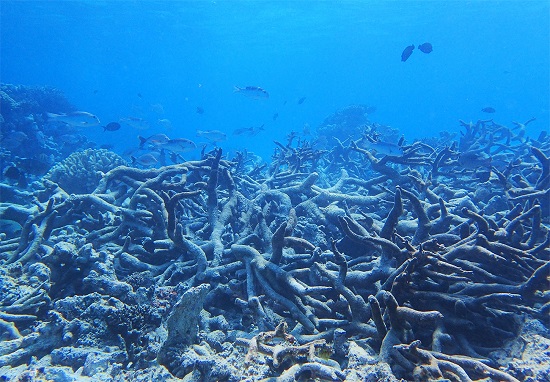
Stories of the Week... SkS Highlights... El Niño/La Niña Update... Toon of the Week... Quote of the Week... Graphic of the Week... SkS in the News... Photo of the Week... SkS Spotlights... Video of the Week... Coming Soon on SkS... Poster of the Week... Climate Feedback Reviews... SkS Week in Review... 97 Hours of Consensus...
Coral reef survival hinges on ‘urgent and rapid’ emissions cuts

Graveyard of Staghorn coral, Yonge reef, Northern Great Barrier Reef, October 2016. Credit: Greg Torda, ARC Centre of Excellence for Coral Reef Studies
The future of the Great Barrier Reef – and other reefs around the world – will ultimately depend on how successfully we can limit ocean warming.
This is the blunt conclusion of a new study, just published in Nature, which examines the impacts of recent coral bleaching events on Australia’s Great Barrier Reef. The event in 2016, for example, left just 9% of surveyed reefs untouched.
The study finds that sea surface temperature is the biggest driver of bleaching, while local efforts to improve water quality or restrict fishing have little impact on limiting its severity.
This means that “immediate action to curb future warming” is essential if coral reefs are to survive, the authors warn.
Coral reef survival hinges on ‘urgent and rapid’ emissions cuts by Robert McSweeney, Carbon Brief, Mar 16, 2017
Global Heat Continues With Second-Hottest February
February was the second hottest on record for the planet, trailing only last year’s scorching February — a clear mark of how much the Earth has warmed from the accumulation of heat-trapping greenhouse gases in the atmosphere.
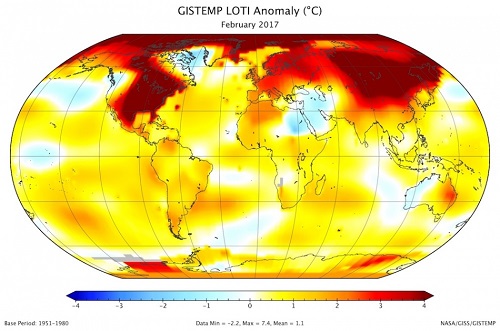
How temperatures around the world compared to normal during February 2017. Credit: NASA
The month was 2°F (1.1°C) above the 1951-1980 average, according to NASA data released Wednesday. That was 0.36°F (0.2°C) lower than February 2016, which ranks as the most anomalously warm month in NASA’s global temperature records, which go back 137 years.
One of the clear hotspots on the globe was once again the Arctic, as was the case in January and last year, which was the hottest year on record. Temperatures there were about 7°F (4°C) above average during February. Those high temperatures have kept Arctic sea ice to record low levels; the Arctic looks to see a record low winter maximum sea ice area for the third year in a row.
Global Heat Continues With Second-Hottest February by Andrea Thompson, Climate Central, Mar 16, 2017
Abnormal El Nino in Peru unleashes deadly downpours; more flooding seen
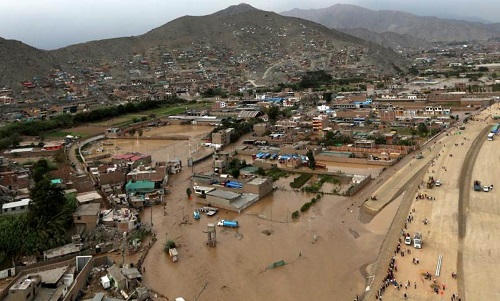
Aerial view after a massive landslide and flood in the Huachipa district of Lima, Peru, March 17, 2017. REUTERS/Guadalupe Pardo
LIMA, March 17 (Reuters) - A sudden and abnormal warming of Pacific waters off Peru has unleashed the deadliest downpours in decades, with landslides and raging rivers sweeping away people, clogging highways and destroying crops in a potential sign of a global El Nino pattern this year.
At least 62 people have died and more than 70,000 have become homeless as Peru's rainy season has delivered 10 times as much rainfall than usual, authorities said Friday.
About half of Peru has been declared in emergency to expedite resources to the hardest hit areas, mostly in the north where rainfall has broken records in several districts, said Prime Minister Fernando Zavala.
Peru is bracing itself for another month of flooding.
Abnormal El Nino in Peru unleashes deadly downpours; more flooding seen by Mitra Taj, Reuters, Mar 17, 2017
The next iteration of our free online course, Making Sense of Climate Science Denial, starts on March 21 and will run for 8 weeks as a paced course.
The MOOC (Massive Open Online Course) is a collaboration between Skeptical Science and The University of Queensland and takes an interdisciplinary look at climate science denial. We explain the psychological drivers of denial, debunk many of the most common myths about climate change and explore the scientific research into how to respond to climate misinformation. With all the misinformation and outright lies coming out of Washington regarding climate science - not to mention many other topics - our MOOC will give you the knowledge to spot and the tools to effectively counter them.
Paced version of Denial101x starting on March 21! by Baerbel W, Skeptical Science, Mar 16, 2016
For climate scientists and meteorologists, predicting the emergence of El Niño and La Niña is one of their most difficult tasks. Currently, researchers at NASA's Jet Propulsion Laboratory in Pasadena, Calif., are trying to do just that.
Their latest analysis of sea levels in the Pacific Ocean — along with several climate models — suggests a new El Niño could emerge with the help of heat left behind by the last warm water event.
Sea level maps populated by data from the Jason-3 satellite mission show a bulge of high seas surrounding Hawaii, a band of warm water leftover from the last El Niño.
Residual heat from last El Niño could spark new one this year by Brooks Hays, UP, Mar 15, 2016
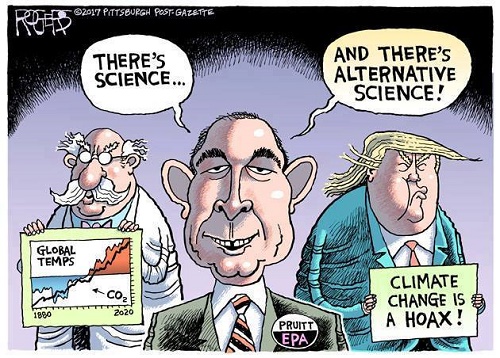
Hat tip to What on Earth? comics
“Trump's budget proposal to Congress has put in place all the worst-case scenarios with respect to defunding global efforts to combat climate change,” said Saleemul Huq, a Bangladeshi climate scientist with the International Institute for Environment and Development.
Budget Proposal Would Hamper Climate Efforts Abroad by John Upton, Climate Central, Mar 16, 2017
Trump's administration on Thursday proposed a 31 percent cut to the Environmental Protection Agency's budget, as the White House seeks to eliminate climate change programs and trim initiatives to protect air and water quality.
Asked about climate change programs, Mick Mulvaney, Trump's budget director, told reporters on Thursday "we consider that to be a waste of (Americans') money."
"I think the president is fairly straightforward. We're not spending money on that," he said.
Climate change financing dropped from G20 draft statement by Jan Strupczewski and Michael Nienaber, Reuters, Mar 17, 2017
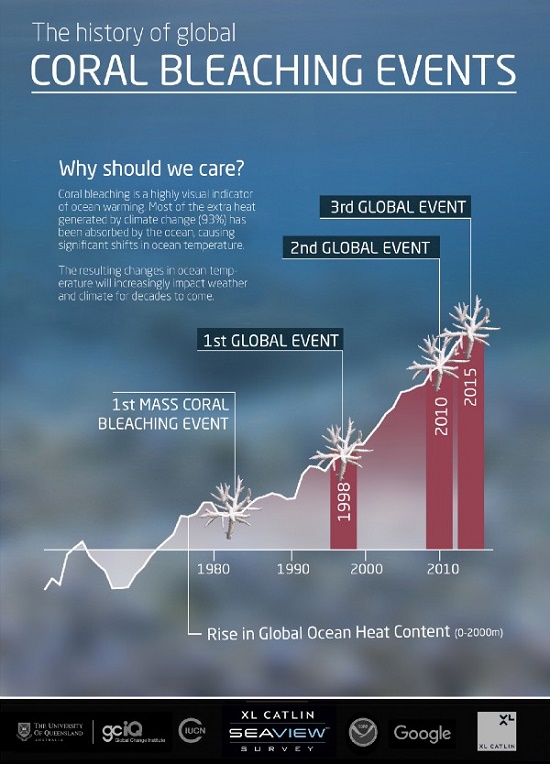
Climate Change Has ‘Permanently’ Changed the Great Barrier Reef by Eric Holthaus, Pacific Standard, Mar 16, 2017
In a Facebook post, Katharine Hayhoe stated:
"Climate's changed before. It's just the sun, or a natural cycle--or both. Mars' ice cap is melting. Carbon dioxide is plant food. And we'd all prefer a warmer planet anyways, right?"
If any of these myths sound familiar, check out Skeptical Science — they've got an answer to each of these common myths, and over 200 more.
I love how there's a 30-second short answer, a longer "basic" answer, and then the full enchilada for people who want all the scientific references, links, and figures.
Warning: a dismissive (someone who no amount of facts, no matter how convincing, will ever convince) will say this is a politically biased website. Why? Because they can't agree with the science it cites. For them, a thermometer really IS liberal.
But for the rest of us, this is the best resource for information on climate myths on the internet. I can't recommend it highly enough. They even have an iPhone app!
In his Journal Gazette (Fort Wayne, IN) article, Banks* unsure of climate change, Brian Fancisco wrote:
Oft-repeated studies stating 97 percent of climate scientists believe people are warming the planet have been disputed by detractors and fact checkers. But the nonprofit Skeptical Science reviewed seven climate consensus studies – including one led by the organization’s founder – and found the consensus on human-caused global warming ranged from 91 percent to 100 percent, with four of the studies at 97 percent.
* U.S. Rep. Jim Banks (R-IN)
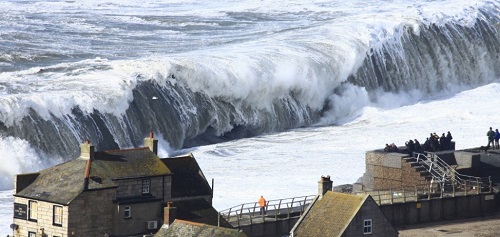
Extreme waves crashing on Chesil Beach in Dorset in southern England on Feb. 5, 2014. Credit: Richard Broome.
Europe Faces Annual Extreme Coastal Floods in Future by Andrea Thompson, Climate Central, Mar 15, 2017
The Joint Research Centre (JRC) is the European Commission's science and knowledge service which employs scientists to carry out research in order to provide independent scientific advice and support to EU policy.
What lies under Antarctica will amaze you, Nova, YouTube, Feb 18, 2017
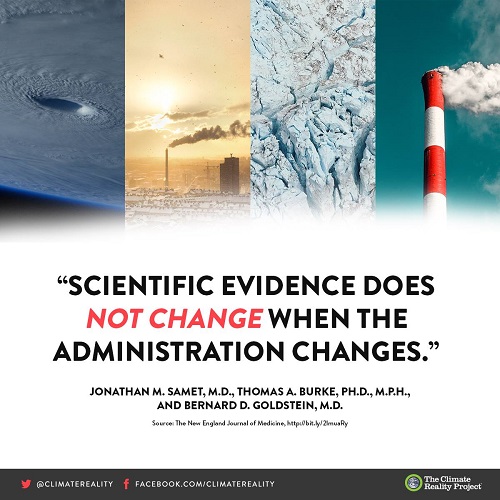
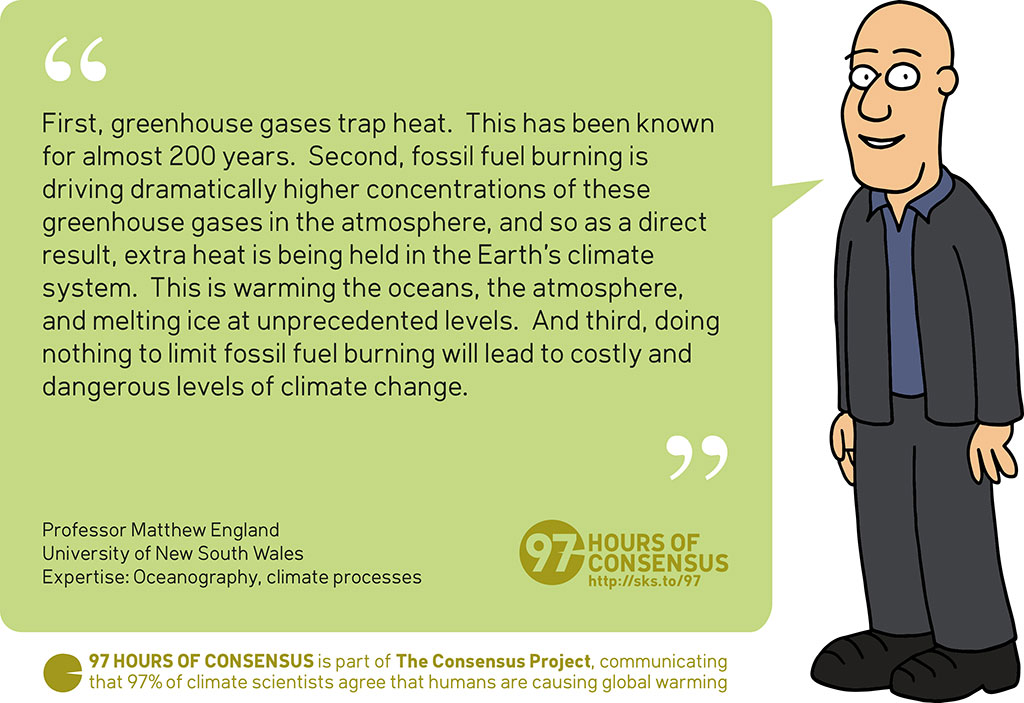
Quote provided by email
High resolution JPEG (1024 pixels wide)
Posted by John Hartz on Sunday, 19 March, 2017
 |
The Skeptical Science website by Skeptical Science is licensed under a Creative Commons Attribution 3.0 Unported License. |